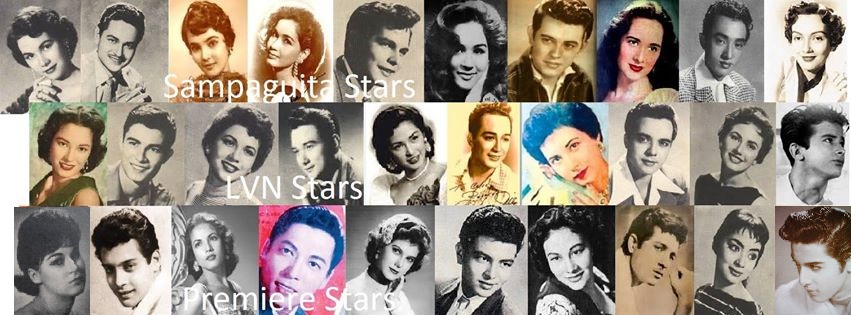Angel Esmeralda-Golden Boy of the 30s
Jun
7
angeklok
angel
The concept of life inspiring art, used to the hilt by reality-based TV series,
isn’t entirely new after all. For even before the World War II,
Philippine movies have banked on real–life love stories to amass viewers. In
fact, it was the formula used by Sampaguita Pictures to bounce back into the
movie biz after the war. And it
worked.
Soon, the studio was casting real couples
like Pancho Magalona and Tita Duran, Alicia Vergel and Cesar Ramirez, Rita
Gomez and Ric Rodrigo in romantic movies that mirrored their lives. Even the
reclusive Lolita Rodriguez made some dramas with then husband, Eddie Arenas.
However, the tandem that paved the
way for this exercise was the couple Angel Esmeralda and Corazon Noble, who
appeared together in the 1938 “Binatang Bukid”.
Being a pioneer wasn’t strange to Angel.
After all, he was four years older than the film industry.
Angel was born in 1915—a
tumultuous period marked by Pancho Villa’s poignant Mexican revolution, but a most opportune time for Angel, who would
grow up to be the filmdom’s golden boy.
As destiny had it, four years after his birth,
the Philippine cinema was born. In 1919, Jose Nepomuceno of Malayan Pictures produced
“Dalagang Bukid” based on the country’s most celebrated sarzuela, penned by
Angel’s dad, Hermogenes Ilagan.
Angel therefore grew up in an
environment that was suffused by the sounds and sights of colorful sarzuelas.
During Angel’s entry into movie
acting, there was a boon in movie making. Film studios that catered to the
insatiable appetites of eager movie fans were sprouting like mushrooms. There
were Sanggumay Pictures, X’Otic Films, Excelsior Pictures, Majestic
Productions, Oriental Pictures, Salumbides Pictures, Parlatone Hispano Filipino
Inc, LVN Pictures and Sampaguita Pictures.
Incidentally, Angel did his first and
last films under the same studio. He was
19, when he did his first movie “Ang Dangal”(1934) under Parlatone –Hispano-Filipino
Inc. His last was “Pipo” (1970) starring the late Charito Solis under
Nepomuceno Productions. “Ang Dangal” featured Angel opposite Dado Garcia and
Patsy. His brother Gerry (de Leon) also
starred in the film. (The first film
outfit in history was Malayan Pictures. It was later renamed as Parlatone- Hispano-Filipino
Inc, until it finally became the Nepomuceno Productions.)
Angel’s contemporaries were Rogelio
dela Rosa, Rudy Concepcion, Carmen Rosales, Angelito Nepomuceno, Leopoldo
Salcedo, Rosa del Rosario, Ana Maria, Fe Crisostomo, soprano Rosario Moreno, Flora Mirasol, Oscar
Moreno, Carlos Baltazar, Elsa Oria, Fernando Poe Sr., Patricia Mijares, Fely Vallejo and Ely Ramos who died at the zenith of his
career.
Years of acting in sarzuela paid off
very well for Angel because it prepared him for the instant movie stardom.
As a contract star of Parlatone
Pictures, he did close to twenty movies in a period of three years, that
included: “Sa Paanan ng Krus” (1936), “Mga Pusong Dakila” (1937), “Nasaan ka, Irog”
(1937), “Anak ng Kadiliman” (1937), “Ruben” (1938), “Ang Pagbabalik” (1938), “Isang
Halik Lamang” (1938), “Lihim ng Dagat-Dagatan” (1939), “Yaman ng Mahirap” (1939)
and “Langit sa Karimlan” (1939).
In 1940, he became a most bankable star
and did a record seven movies in one year, under five different film outfits:
“Cadena de Amor” for Sanggumay Pictures, “Pangarap” with Corita Sta. Maria and
”Prinsesa ng Kumintang“ with Mila del Sol
under LVN Pictures, “Bawal na Pag-ibig” and “Binatang Bukid” under his home studio Parlatone- Hispano-Filipino
Inc, “Santa” and “Tala sa Kabukiran” for Majestic Pictures, and “Estrellita” and
“Kahapon Lamang” under Sampaguita
Pictures.
During the Japanese occupation, he
busied himself onstage as romantic lead to radio queen Tiya Dely Magpayo in “Nasaan Ka, Irog” under the
direction of Lamberto V. Avellana at the Manila Grand Opera House.
His winning streak continued after
the war with hits such as “Buenavista” (1941), “Mariposa” (1941), “Liwayway ng
Kalayaan”(1946), “So Long America” (1946),”Ligaya”(1947), and “Meme na Bunso” (1949). He also directed “Maria Kapra”(1947) starring Jose Brillante, Jose De Villa and Linda Estrella.
In 1951, Angel migrated to Guam as an American citizen. But each time he went home,
he would still go back to his movie roots, and in fact did two in 1954, ”Dasalang Ginto” and “Ang Manyika ng Sta. Monica”.
“He did some trading there, mostly
of Philippine products like bangus
and other local produce,” says Leslie, his third child.
At 30,
Angel became a father to Lourdes,
who met a tragic end from the hands of the Japanese soldiers during the fateful
Battle of Manila in 1945. Eventually, Angel
had six children: Lourdes,
Melvin, Leslie, Marlon, Angel (Rebecca) and Jay.
“He was a great father,” says Leslie. “He was
a disciplinarian. I remember that when I was in Grade II, sinumbong ako ni mommy, ang hina-
hina ko daw sa Math. My father talked to me. Sabi n’ya, ’starting tomorrow, walang tutulong sa ‘yo and you will become good in Math.’ Alam mo, I ended up taking engineering.”
Angel’s career lasted for 36 years. In 1981, he was honored with the Walang Kupas
Lifetime Achievement award by the Donya Josefa Edralin Marcos Foundation,
together with his wife, Corazon Noble. He died in the Philippines in
1985 at the age of 70.
Angel Esmeralda was a true showbiz royalty. His father was the famed playwright Hermogenes
Ilagan, the acclaimed father of Philippine sarzuela. He was among the 13
children of Hermogenes and wife Casiana de Leon. He was uncle to Liberty Ilagan, brother to
national artist Gerry de Leon, husband to movie queen Corazon Noble, and father
to one of the finest actors who ever graced the cinema, Jay Ilagan.
In the spiritual world, emerald was the stone
on the Ephod representing the tribe of Judah. But in the movie world,
Angel was the most striking emerald in the tribe of pre-war actors.

No comments:
Post a Comment